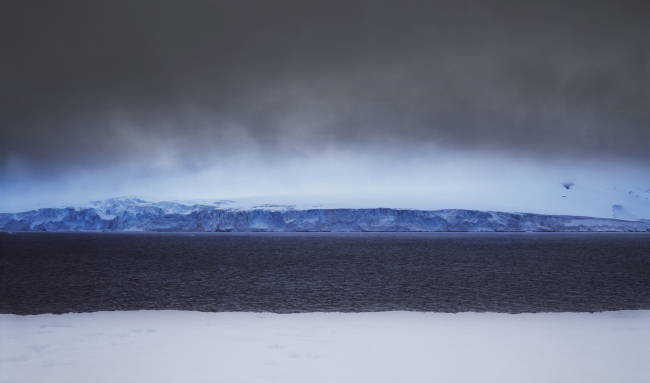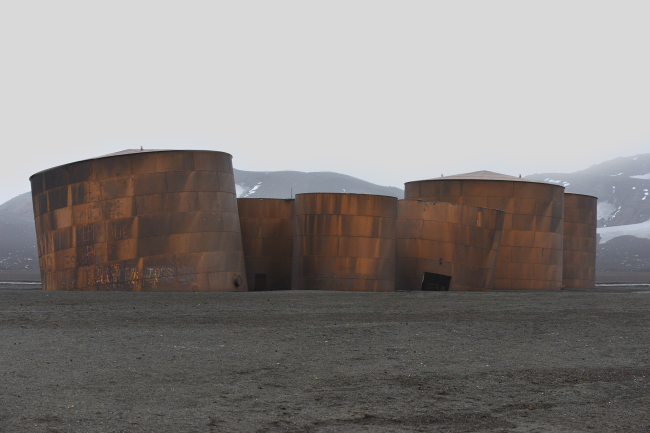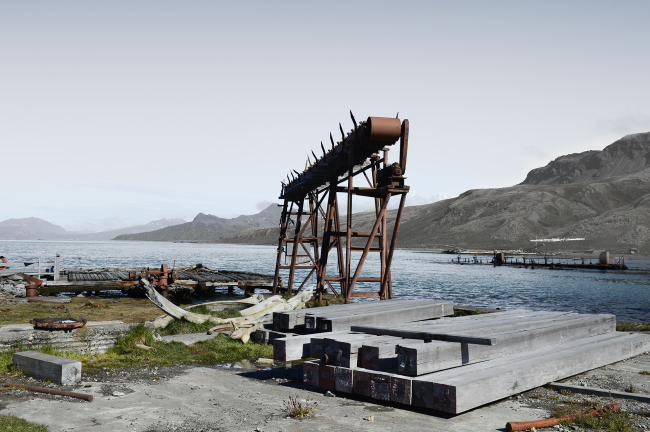Exploitation at the ends of the Earth
Artist Han Sung-pil portrays remains of once-flourishing mining and whaling out posts in the Arctic and Antarctica
By Lee Woo-youngPublished : Jan. 12, 2015 - 20:20
With images of the North and South Poles becoming cliche through overuse in environmental documentaries, artist Han Sung-pil’s photographs of the Arctic and Antarctica offer a different view of these vulnerable regions.
He focuses on the history of human exploitation in the world’s least explored places since the time when early European explorers discovered the lands and their rich natural resources.
He made several trips to the Arctic and Antarctica from 2013 to 2014 searching for traces of exploitation, their influence on world economic development and environmental damage to the regions.
He focuses on the history of human exploitation in the world’s least explored places since the time when early European explorers discovered the lands and their rich natural resources.
He made several trips to the Arctic and Antarctica from 2013 to 2014 searching for traces of exploitation, their influence on world economic development and environmental damage to the regions.


He visited an old marble mine in Norwegian territory, a mining town in Russia and old whaling ports in Antarctica; uncovered the history of earlier expeditions and exploitation; and recorded their stories in photographs. They are now on view at his solo exhibition at Arario Gallery in Seoul.
“The sublimity I saw in the grand icebergs and landscapes of the Arctic and Antarctica hid the layers of time. These layers included expeditions of European explorers, centuries-old whaling and mining that may be the foundation of industrialization and economic prosperity we have accomplished,” said Han during the press preview of the exhibition on Thursday.
From more than 100,000 photographs of these sites in the Arctic and Antarctica, Han selected some 30 photographs and videos for the exhibition “Polar Heir.” The selection excluded snapshots of penguins and polar bears.
“I took many of them. But we have seen them enough in environmental documentaries. I am here to talk about the inheritance of human exploitations passed on to future generations,” said Han.
The reminder of such ventures is easily found in an iceberg pond with black dirt piled up from the pollution caused by early development; in deserted rusty metal containers that used to contain whale oil and in abandoned whaling ships and ports.
The Norwegian region of Blomstrandhalvoya is one of the places Han dropped by during his trip to the Arctic. The region’s Svalbard, a once-flourishing marble mine village, shut down after the marble produced there turned out to be easily breakable in cold temperatures. By 1998, an iceberg that had made the region a peninsula had completely melted, making it an island.
Han made trips to old whaling towns, which used to supply whale oil and bones to all parts of Europe and North America. Europeans and Americans depended on whale oil to light most of their lamps and whale bones were used to make corsets for women.

Early whaling ventures were conducted near places like Deception Island in the South Shetland Islands and Grytviken in South Georgia, near Antarctica. With the significant decline in the number of whales in 1960s and the drop in whale oil demand, all that remains in these places are rusty barrels and ships and old whale bones.
In the video installation, Han’s photos are accompanied by the sound of melting icebergs and the dancing light of the aurora to create a sublime image of the Arctic and Antarctic.
The exhibition runs through Feb. 22 at Arario Gallery in Jongno-gu, Seoul. For more information, call (02) 541-5701.
By Lee Woo-young (wylee@heraldcorp.com)



![[Exclusive] Korean military set to ban iPhones over 'security' concerns](http://res.heraldm.com/phpwas/restmb_idxmake.php?idx=644&simg=/content/image/2024/04/23/20240423050599_0.jpg&u=20240423183955)




![[Pressure points] Leggings in public: Fashion statement or social faux pas?](http://res.heraldm.com/phpwas/restmb_idxmake.php?idx=644&simg=/content/image/2024/04/23/20240423050669_0.jpg&u=)










